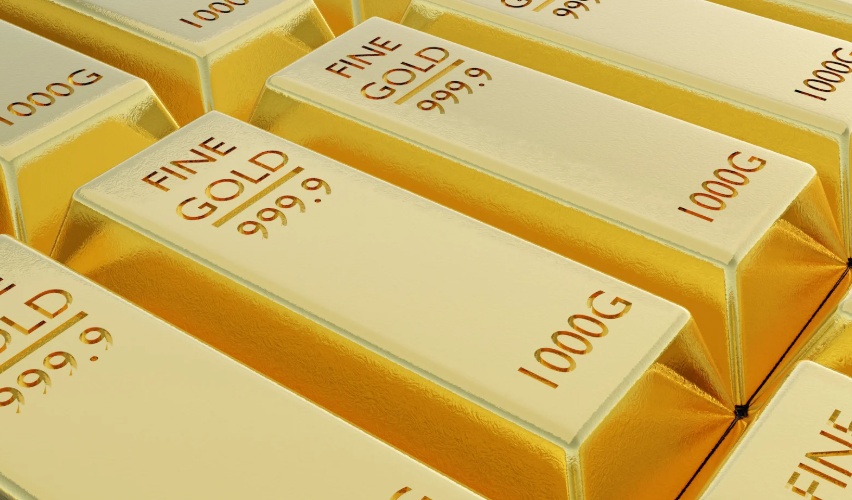Gold’s Relentless Climb: Central Banks, Geopolitical Risk, and U.S. Economic Conditions Fuel Bullish Outlook
Gold continues its upward trajectory. It was one of the best-performing assets in portfolios last year, and this year follows the same trend—with new record highs included. All signs point to this momentum continuing. Historically, the second half of the year tends to favor gold prices. Since 1971, average returns during this part of the year have outperformed those of the first half, reinforcing the bullish outlook described by analysts and underpinned by fundamental drivers.
Chris Mahoney, Investment Manager for Gold and Silver at Jupiter AM, is clear in his outlook for the precious metal: “One of the determining factors will undoubtedly be the activity of central banks.” He explains that official purchases tend to intensify in the second half of the year and cites a recent survey by the World Gold Council, which reveals that 43% of monetary authorities intend to increase their reserves in the coming months.
While he does not rule out a moderate correction—especially considering that gold hasn’t seen a drop of more than 10% in over two years—he believes the structural support remains solid.
Another factor Mahoney sees as increasingly influential on gold prices is the U.S. economic cycle. “There are growing signs that the U.S. economy is in a late-cycle phase, which could lead the Federal Reserve to ease monetary policy sooner than expected. If this expectation materializes, it would act as an additional catalyst for gold,” he says.
At the same time, geopolitical tensions remain a key driver. The recent trade truce between the U.S. and China could deteriorate, with negative effects on the global economy and additional pressure on interest rate policy. According to the Jupiter AM expert, “a resurgence of tensions would likely favor gold as a safe-haven asset.”
He also highlights the political context in the U.S.: Fed Chairman Jerome Powell‘s term ends in less than a year, and President Donald Trump—a vocal advocate of low interest rates—has expressed his intention to nominate a successor aligned with that view. Therefore, “any announcement in this regard could significantly shift expectations around rates and inflation, which are fundamental drivers of gold performance,” Mahoney concludes.
Bank of America shares a similar view. The firm recalls that gold reached an all-time high after Independence Day but later gave up those gains. To continue rising, the precious metal needed “a new trigger,” and the U.S. budget could be that bullish driver—“especially if deficits increase.”
The macroeconomic context encourages greater diversification of reserves; central banks should allocate 30% of their reserves to gold. Retail investors are also buying gold, and ongoing macro uncertainty and rising global debt levels remain supportive factors.
In short, the conditions that have driven gold’s recent strength appear likely to persist, according to Bank of America: the structural U.S. deficit; inflationary pressures from deglobalization; perceived threats to the independence of the U.S. central bank; and global geopolitical tensions and uncertainty. That is why the firm has raised its long-term price target for gold by 25% to $2,500 (real).
Ian Samson, Multi-Asset Fund Manager at Fidelity International, also maintains a positive view on gold. He believes bull markets for gold “can last for years” as it continues to provide diversification even when bonds do not, retains its privileged status as a “safe haven,” offers protection against inflation and loose economic policies, and benefits from structural trends.
Samson acknowledges that, given a macro base of economic slowdown in the U.S. or even a potential stagflationary environment in the coming months, he remains positive on gold’s prospects. He argues that the Federal Reserve is ready to cut interest rates despite inflation lingering around 3%, and that tariffs will likely keep prices elevated.
Additionally, the impact of tariff policy and a slowing labor market will also trigger a weak growth environment, in the expert’s view. This combination should support gold, which competes head-to-head with a weakening dollar as a safe haven and store of value. “We’ve never seen this scale of uncertainty and change surrounding tariff policy, and the effects are still unfolding. Furthermore, the size of the U.S. budget deficit raises concerns about monetary debasement, which further strengthens the long-term case for gold.”
Meanwhile, the structural case for investing in the precious metal remains strong, and numerous countries—including China, India, and Turkey—are structurally increasing their gold reserves in an effort to diversify away from the dollar, as gold offers diversification without the credit risk inherent in foreign currency reserves.
Moreover, gold supply remains highly constrained, meaning even a small increase in portfolio allocation could move the needle: “For example, if foreign investors were to decide to move a portion of the $57 trillion they currently hold in U.S. assets, gold would be a more than likely destination.”
For now, Samson says he is “comfortable” maintaining gold in his multi-asset portfolios through a combination of passive instruments that directly track gold prices and a selection of gold mining stocks.




